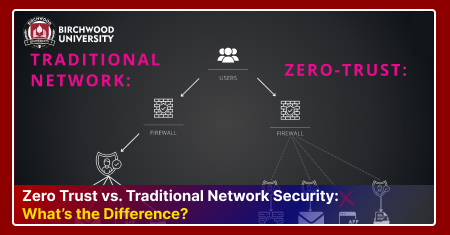What Is Shadow AI? How to protect your business from its threat?
Jul 10, 2024Shadow AI means the unauthorized or unsanctioned use of artificial intelligence (AI) and machine learning (ML) tools and models within an organization without knowledge or approval from IT or security teams. This unregulated adoption of AI can pose a significant risk to data privacy, security, and compliance and lead to unforeseen consequences, such as data breaches, regulatory fines, and reputational damage.
How can you protect your business from its threat?
To protect the business from the threat of shadow AI, it is essential to establish clear policies and guidelines governing the use of AI tools and applications and to implement robust monitoring and security measures. This includes training employees on AI's potential risks and benefits and conducting regular audits to identify and mitigate unauthorized AI usage.
Why is there an urgency to address this?
There is an urgency to address shadow AI because of its potential to cause significant harm to organizations, including data breaches, regulatory fines, and reputational damage. The increasing adoption of AI in various industries, including healthcare, finance, and IOT, underscores the need for organizations to prioritize AI security and compliance.
What are some of the opportunities?
Shadow AI will provide several opportunities for organizations to leverage AI and ML for improved prediction accuracy, reduced risk, and optimized performance. By implementing shadow AI responsibly, organizations can harness the power of AI to improve their tasks and operations, gain a competitive edge, and drive innovation.
What are the risks that are indirectly linked to shadow AI?
Using shadow AI brings several risks to organizations, including the following factors:
Data privacy and security: unauthorized AI models can lead to the unauthorized exposure of confidential information, unauthorized access to sensitive data, and potential data breaches.
Compliance and regulatory issues: Shadow AI can violate government policies and regulations, leading to unforeseen fines, legal repercussions, and reputational damage.
Lack of oversight: without proper governance, it is difficult to ensure that AI tools are used responsibly and ethically, raising concerns about biased outputs and unethical AI behaviors.
Less efficiency in data management: Disparate AI tools can create silos of data and analytics, leading to inconsistent results and decision-making challenges.
Integration problems: Unauthorized AI applications may not integrate well with existing systems, leading to operational inefficiencies and additional costs.
What are the benefits of shadow AI?
Despite the risks, shadow AI can offer significant benefits that include
Enhanced productivity: Users can solve a problematic situation quicker and more effectively with direct access to AI tools.
Increased innovation: By experimenting with AI tools, users can develop innovative solutions that might not emerge through official channels.
Employee empowerment: Users can explore AI tools to increase job satisfaction and retention.
How can an organization reduce the risks of shadow AI?
To reduce and mitigate the risks of shadow AI, organizations can take the following steps:
Establish AI policies and rules: Organizations create a centralized governance framework communicating clear guidelines for AI deployment across the company. Outline compliance requirements and data usage policies to ensure compliance with internal and external regulations.
Spread awareness: Organizations can use training programs to educate employees about shadow AI-associated risks and consequences and the significance of adhering to company guidelines while using AI technologies.
Implement access controls: Implement monitoring tools and access controls to detect instances of shadow AI and place certain restrictions on AI platforms and unauthorized use within workplaces.
What are some examples of shadow AI?
Common examples of shadow AI include the unauthorized use of AI tools for data analysis, machine learning platforms for predictive modeling, and AI-driven automation tools. Employees often use self-procured SAA applications to enhance productivity or create solutions with tools they cannot wait to purchase through the official IT process.
Why do employees use shadow AI?
The adoption of shadow AI is often driven by the need for rapid problem-solving and the ability to leverage cutting-edge AI capabilities without waiting for corporate approval. Employees might feel that official channels are too slow or lack the specific AI functionalities they need to be effective in their roles. Further, team members get easy-to-access AI tools, and SAAS applications empower even non-technical users to implement sophisticated solutions.
How can organizations manage shadow AI?
Organizations can manage shadow AI with robust and scalable solutions to manage and mitigate the risks associated with unauthorized AI tools. The Grip SAAS plays a crucial role in providing organizations with the tools necessary to govern AI use in their IT environment, enabling enterprises to identify unnecessary elements inside the system.
What is the current state of shadow AI?
The current state of shadow AI is that investigating its impact reveals its growing presence in enterprises. Over half of employees use AI for work-related tasks, and a substantial portion of AI tool adoption occurs outside the formal IT and AI governance structures. Many organizations are unaware of the extent of shadow AI within their operations, which poses unrecognized risks.
What are the suitable practices for managing shadow AI?
It helps implement AI governance, including transparent policies, frameworks, and procedures for AI development, deployment, and usage.
It improves by maintaining regular audits that help monitor and audit AI tools to detect and prevent unauthorized usage and ensure compliance with policies.
It encourages providing education and training so that employees will know about the benefits and risks of AI.
It creates an open and transparent culture where employees feel comfortable reporting and addressing concerns regarding AI usage.
What is the future of shadow AI?
The future of shadow AI is complex, with both risks and opportunities emerging. As AI becomes more pervasive and accessible, organizations must develop effective AI governance frameworks and policies to ensure that AI can be used with minimum risks. The growing focus on AI ethics and fairness will also play a crucial role in enhancing the future of AI development and deployment.
So, it concluded that shadow AI is a growing concern for organizations as employees increasingly use AI tools and platforms to enhance productivity and streamline work processes. It has been suggested that the organization can develop effective governance.






